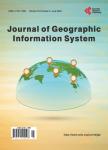Assessing the Suitability of the WorldClim Dataset for Ecological Studies in Southern Kenya
Assessing the Suitability of the WorldClim Dataset for Ecological Studies in Southern Kenya作者机构:Department of Geomatic Engineering & Geospatial Information Systems Jomo Kenyatta University of Agriculture and Technology Juja Kenya Department of Geomatics and Geospatial Information Systems Dedan Kimathi University Nyeri Kenya
出 版 物:《Journal of Geographic Information System》 (地理信息系统(英文))
年 卷 期:2018年第10卷第6期
页 面:643-658页
学科分类:1002[医学-临床医学] 100214[医学-肿瘤学] 10[医学]
主 题:WorldClim Bioclimatic Variables Thematic Uncertainty Temporal Uncertainty
摘 要:There have been numerous efforts to generate freely available climatic datasets for use in species distribution models, the most popular being the global climatic dataset known as WorldClim. The availability of such datasets is invaluable to scientists as many studies are performed in remote areas where no weather stations are found. However, many users do not critically assess the suitability of these datasets for their applications, and errors associated with global datasets are often assumed to be negligible. Understanding what a climate dataset can or cannot deliver requires the user to have a working knowledge of what the basic spatial climate-forcing factors are at the scale of his/her study, and to have a good understanding of the uncertainty in the dataset. In geographic studies, uncertainty is often described by the degree of error (uncertainty), or degree of accuracy (certainty) in data, and thematic uncertainty refers to the uncertainty in measures made for each variable, whereas temporal uncertainty refers to the uncertainty in time period represented by each variable. Here, we used climatic data from weather stations to investigate the climate-forcing factors in southern Kenya, and then used this weather station data to investigate the uncertainty in the WorldClim dataset. Results indicated that the nineteen core Worldclim variables, known as bioclimatic variables, accurately depicted the local variations in climate in the study area. However, whereas the monthly and seasonal temperature variables represented the same time period in different locations, the same was not true for the monthly and seasonal precipitation variables. The onset of rains is a key biological indicator, and scientists studying phenomena tied to the onset of rains need to keep in mind the temporal variations represented in the WorldClim dataset.



